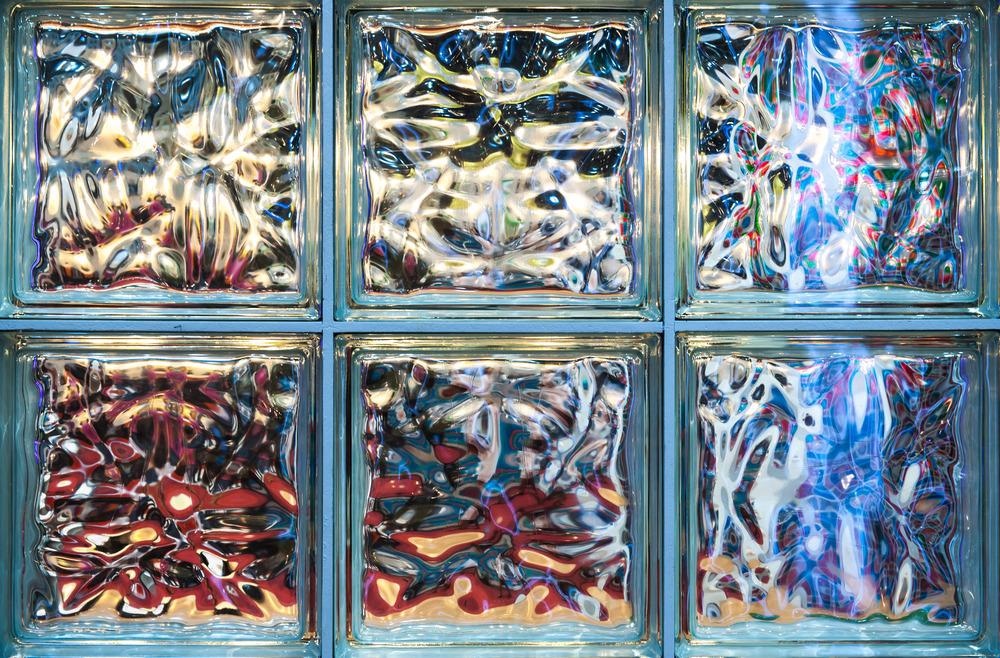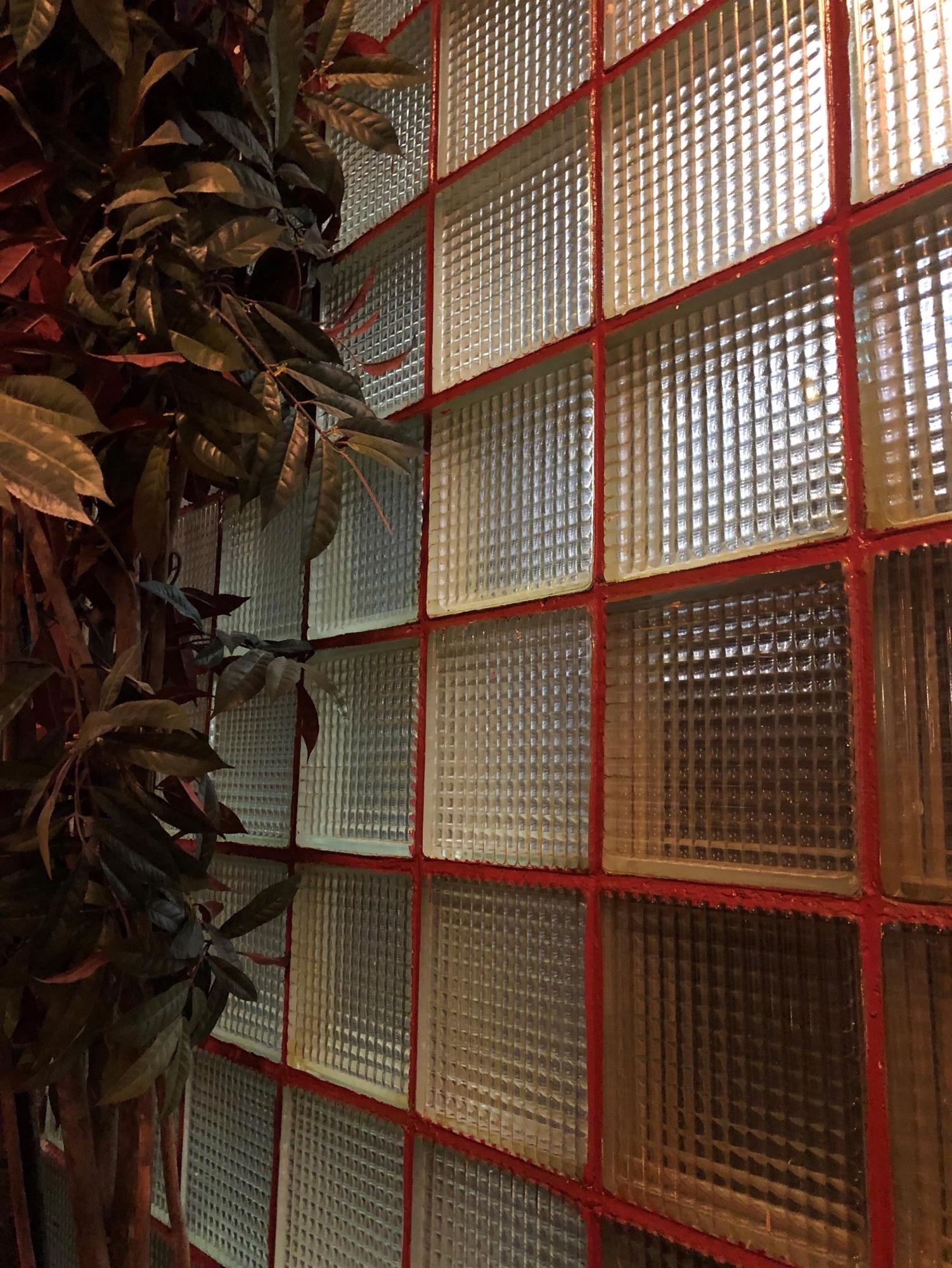Glass blocks are architectural materials that provide both visual opacity and light in buildings. Glass is an integral part of upscale interior design and can be used for wall and floor applications.

Image Credit: Sthaporn Kamlanghan/Shutterstock.com
History Of Glass Blocks
The first hollow glass block was patented by Gustave Falconnier in 1886. The glass bricks, also called ‘brique de verre’, were made by being blown into molds with a hollow center and a hole at one end which was filled with a plug.
One American company, known as Owen-Illinois Glass Company, first introduced its glass blocks to the public at the Chicago century of progress exhibition in 1933. This was achieved by building the Owens-Illinois glass block building, which was made of about 25000 glass blocks. This was a temporary structure that was built for an exhibition on horticulture.
This glass company began to advertise its products by marketing the attributes of the glass blocks. Many of these beneficial attributes still stand firm with today’s designers and architects. Some of these include low cost, light transmission, diffusing properties without any glare, high durability and strength, fire resistance, sound deadening capabilities, and ease of cleaning and maintenance.
In the 1930s and 1940s, glass blocks had become a popular building material and were utilized by streamlining modern or Art deco styles. However, by the early 2000s, glass blocks experienced a reduction in popularity. Are they now seeing a comeback?
Uses And Benefits Of Using Glass Blocks in Building
Glass has the ability to allow natural light gently into the room while also providing privacy for the building's occupants. Glass blocks are also available in a wide variety of options which allows the customer to choose a specific glass with properties that they feel would suit their needs.
These glass blocks are also designed in such a way that they are strong and resilient enough so as to be safe. Another advantage of glass blocks is that they are able to provide both sound and thermal insulation.
Some uses of the glass blocks include their utilization for interior decorations for both residential and commercial buildings. Glass block wall panels are also often used in well-lit bathrooms in many houses to beautify the rooms. Wall cladding works on the exterior of commercial buildings can be done using glass blocks to enhance the appeal of the commercial building.
MVRDV replaces Chanel store's traditional facade with glass bricks
Video Credit: Dezeen/Youtube.com
Some Notable Examples Of Classic Glass Block Buildings
There are many famous examples of buildings that have been built with glass blocks.
This building was designed by Renzo Piano. It was a modern architectural design at the time built in the Ginza district in Tokyo. This building stands at 15 stories tall and took around 13,000 glass block units, which were designed specifically for this project.
Balneario de Panticosa in Spain
This is a luxury spa and hotel built in the Valle Del Tena Aragon. The main attraction of the spa and hotel is its thermal baths as well as the stunning views.

Image Credit: Lazaro Horta/Shutterstock.com
The University of Deusto in Spain has a Doric glass block library. Rafael Moneo, its architect, utilized the 3D Doric block to combine the modern and classical styles. The library is situated close to the famous Guggenheim museum, which was designed by the famous American architect Frank Gehry, but Moneo was still able to give the library its own aesthetic identity by utilizing the varying perception of the glass block to maximum effect.
This is a modern-day glass restaurant situated in the business district of Austin, TX. The restaurant's customers are not only attracted to the unique recipes, but also to the restaurant's peculiar and alluring entrance which was designed by the Architect Olson Kundig. The architect had intentions of attracting pedestrians who would wonder what was inside the spectacular glass building, a plan that was successful, as many people who pass by are curious enough to find themselves inside.
This award-winning building is perceived by many as a marvelous work of art. It is a brightly-lit sculpture that is now considered a landmark in Alberta, Canada. This building was designed by gh3 with the collaboration of talent from Scorpio Masonry and the company Seves Glass Block, who together produced a unique circular structure that houses equipment for flood control as well as overflow sewage tanks that are situated below the structure.

Future Of Glass Blocks In Building
Glass blocks have arguably been considered to be an outdated architectural material, but they are now finding their way back to the scene as more modern architects and designers are reviving the once-significant materials. Their useful and aesthetic qualities are making glass blocks more popular, and there has been an increased use in modern buildings.
References and Further Reading
Ravenscroft, T., 2020. Walls of house in Ho Chi Minh City replaced with glass bricks. [online] Dezeen. Available at: <https://www.dezeen.com/2020/11/18/glass-brick-house-ho-chi-minh-city-room-design-build/>
Patil, R., n.d. Glass Block. [online] Constructionor.Com. Available at: <https://constructionor.com/glass-block/>
Seves Glass Block Inc.com. 2021. History of Glass Block in Architectural Design | Seves Glass Block, Inc.. [online] Available at: <https://sevesglassblockinc.com/blog/history-glass-block-architectural-design>
Greenwood, C., 2020. The ’80s Trend That Real Estate Agents Love Seeing. [online] www.apartmenttherapy.com. Available at: <https://www.apartmenttherapy.com/glass-blocks-trend-36849842>
Disclaimer: The views expressed here are those of the author expressed in their private capacity and do not necessarily represent the views of AZoM.com Limited T/A AZoNetwork the owner and operator of this website. This disclaimer forms part of the Terms and conditions of use of this website.